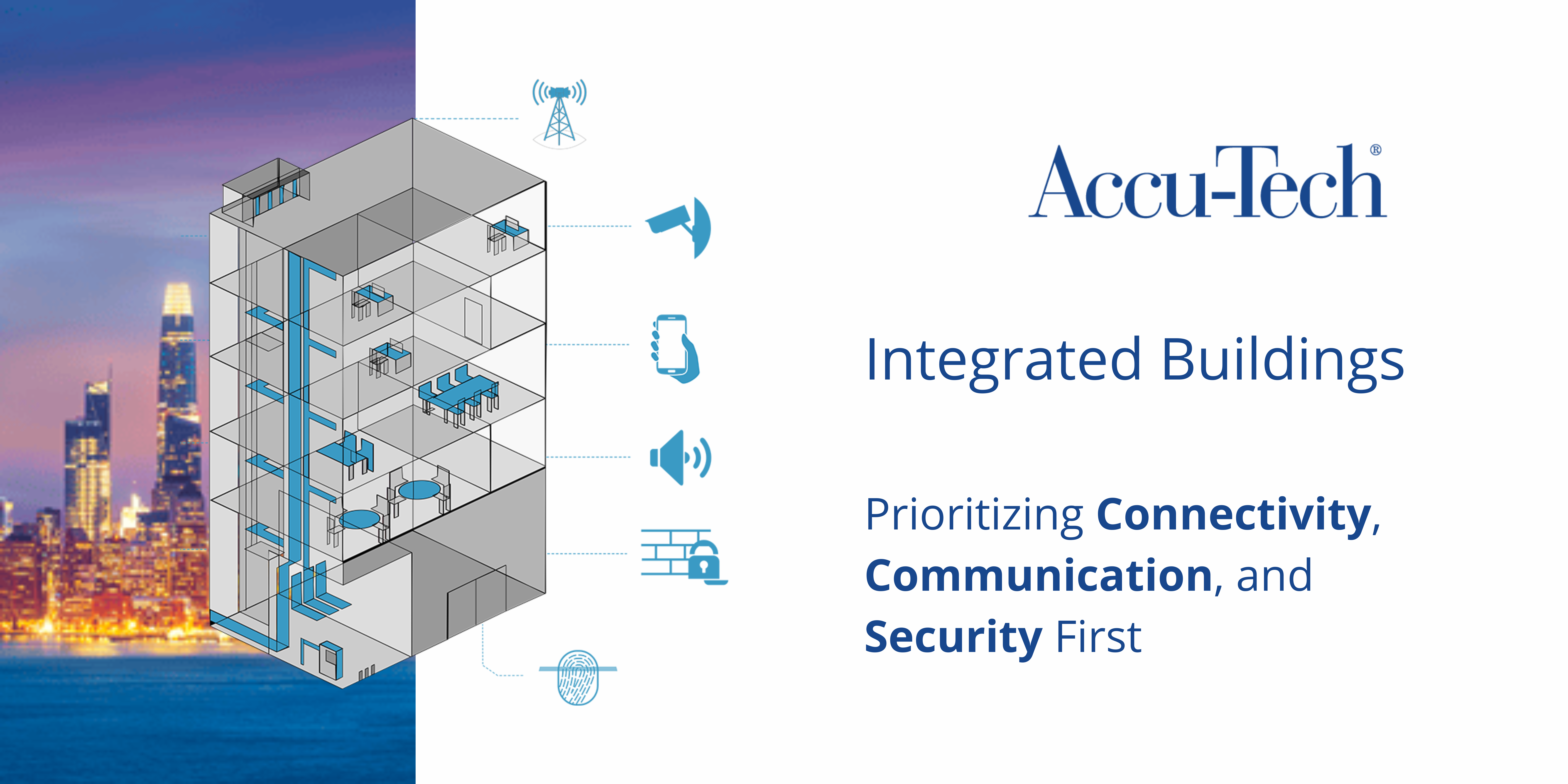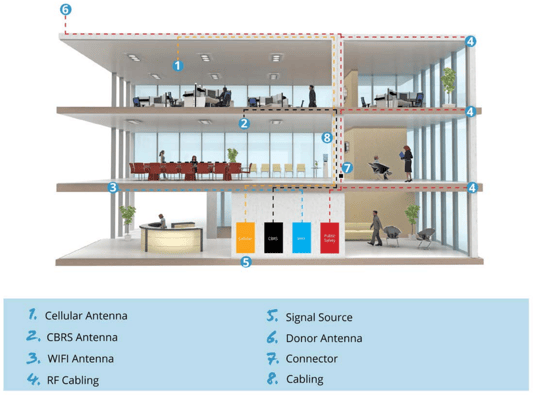Wireless connections have been growing at an exponential rate in recent years. According to predictions by Ericsson, North Americans’ data consumption will increase by 500% per user in the next four years. The average user is also expected to consume 48 GB of data each month by 2026.
Carrier networks, which support mobile/cellular connections, will be where much of this data consumption takes place. Compared to 2011, today’s mobile networks carry almost 300 times more data traffic.
What does this mean for buildings where data is consumed?
We know that indoor mobile connectivity must be prioritized, but a building itself can still prevent critical cellular signals from coming inside. Metal, tinted glass, brick, and concrete are all physical barriers that often slow down or prevent strong Wireless connection.
To make sure that every employee, visitor, and guest stays connected indoors, buildings must physically adapt in order to support Wireless growth. Thus, today and tomorrow’s buildings are evaluated and ranked by certification programs, based on the digital infrastructure, future-readiness, and connectivity they can offer to their occupants.
Previously, if mobile carriers knew that their customer was located near a high-rise office, arena, or shopping district for example, they would have helped fund the facility’s wireless infrastructure. Because of this external investment, the local building owner wouldn't have to do very much to deploy a high quality mobile network.
As time has gone on, however, carriers no longer have the budget to continue operating this way; enterprises now often fund and deploy in-building wireless on their own accord. Newly responsible for these overwhelming costs, business owners are searching for more connectivity options, like private wireless networks.

What Is a Private Wireless Network?
Private wireless networks give individuals and organizations the opportunity to deploy their own connectivity systems. An enterprise owns and operates these systems, not a mobile carrier.
In the United States, private wireless networks can operate within the Citizens Broadband Radio Service and the C-Band spectrum (CBRS). The CBRS frequency range spans between 3.5 GHz and 3.7 GHz, is licensed to the U.S. Department of Defense, and has been available to more people thanks to the U.S. Federal Communications Commission. The OnGo™ Alliance, a coalition of industry organizations focused on shared-spectrum solutions, also governs the spectrum shared between these groups.
Why Are Owners Choosing Private Wireless Networks?
Owners are opting to pursue private wireless networks, but why? The biggest reason is often cost. In densely-populated areas, carriers may continue to fund infrastructure, but in situations where they can’t or won’t, owners have found that private wireless networks are the most cost-effective way to maintain the mobile connectivity that modern users demand.
The need to integrate privacy and Security solutions in buildings has also driven the popularity of private wireless networks. In a public network, data traffic travels to a central network in another location and back over and over. Private wireless networks eliminate the risks that public networks pose, which in turn lowers latency and improves speed.
Private networks also have the benefit of offering total control over their bandwidth distribution. For example, a smart manufacturing plant can choose to prioritize connectivity for its latency-sensitive production lines over back-of-house systems where it is less important.
With reliable internet becoming more important than ever, finding the best wireless option for your needs will be imperative. Visit Accu-Tech Wireless to see if Accu-Tech and Belden have the right solution for you.
Interested in learning how Belden can support your wireless projects? Read the full blog post, or contact your Accu-Tech representative to learn more.





.png?width=58&height=58&name=X_logo_2023_(white).png)
